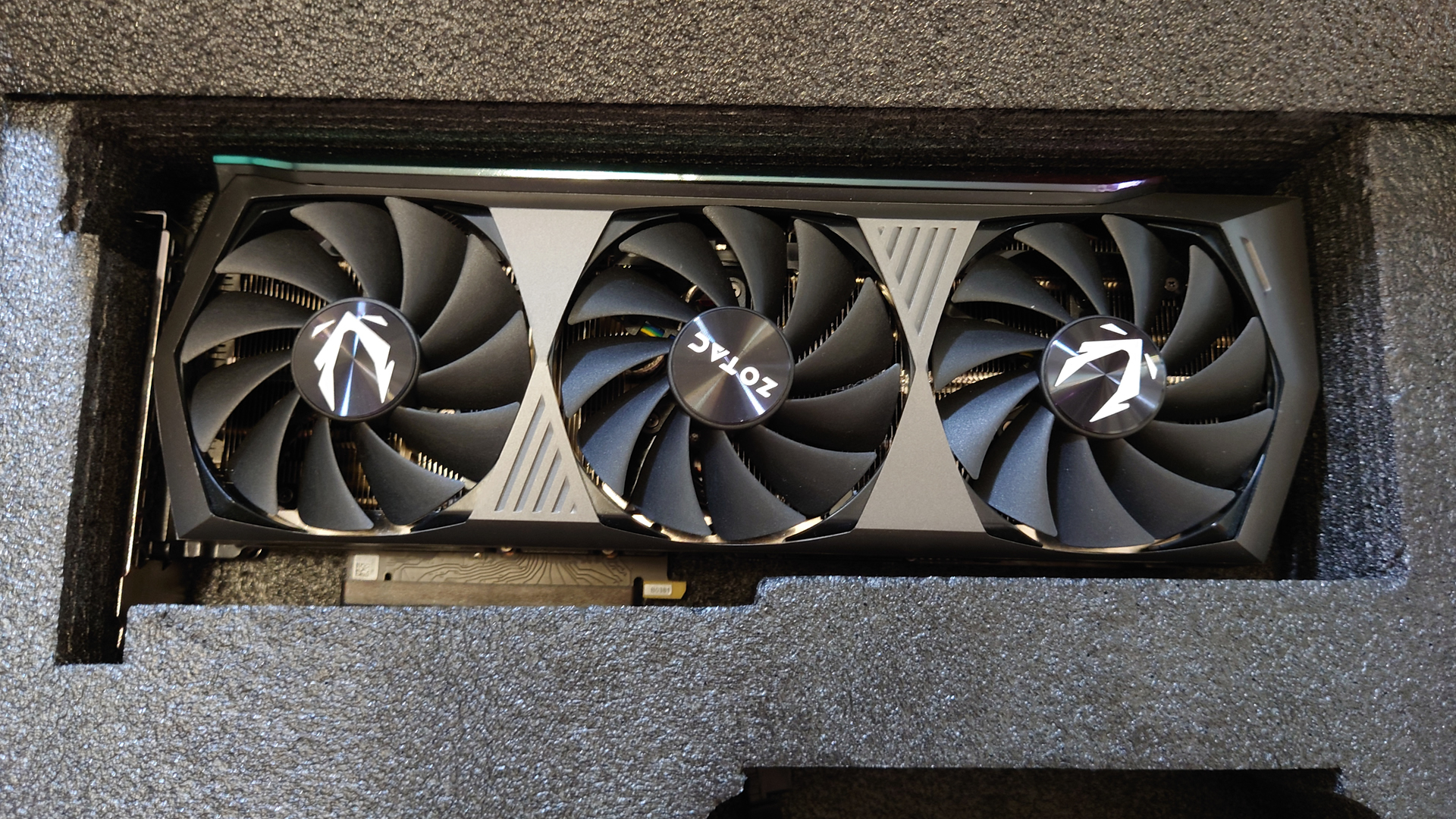GamesRadar+ Verdict
The Zotac Gaming GeForce RTX 3080 AMP Holo is one of the flashier and more powerful video cards on the market right now. It's a must-buy for anyone wanting high-end 4K gaming, if you can find it for a reasonable price that is.
Pros
- +
A 4K powerhouse
- +
Incredible ray tracing performance
- +
Amazing build quality and lighting
- +
Doesn't need a 12-pin adapter
Cons
- -
Very loud under stress
- -
Unlikely to find for MSRP
Why you can trust GamesRadar+
The Zotac Gaming GeForce RTX 3080 AMP Holo is certainly at the premium end of the video card market, especially as far as the Ampere line of GPUs is concerned. It launched originally at $799, a full $100 more expensive than the Founders Edition Nvidia RTX 3080 - however, you're very unlikely to come across this unit for its actual retail price. Still, though, this is one of the best graphics cards for gaming and an absolute monster in 4K in most circumstances.
What separates the Zotac Gaming GeForce RTX 3080 AMP Holo from other partner cards is the emphasis on RGB lighting, the triple fan design, and the slightly faster boost clock. Should you be able to find this GPU for a decent rate, this particular model is certainly worth your time and attention.
Design
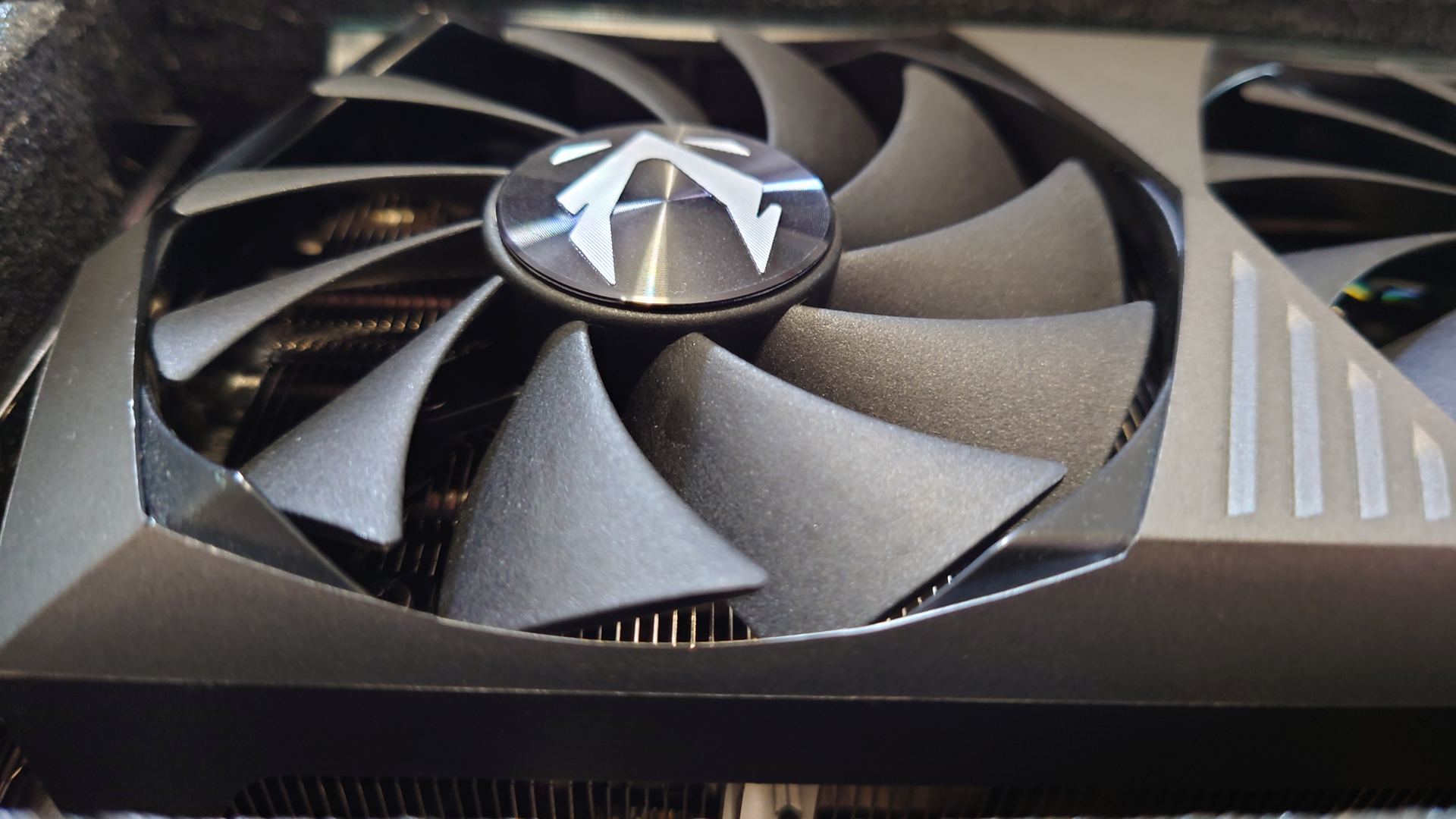
At first glance, the Zotac Gaming GeForce RTX 3080 AMP Holo should be immediately familiar to anyone who has seen the product line before. Much DNA has been shared with Zotac's standardized approach to triple fan graphics cards, especially since Turing, with many of the company's GPUs sharing the same aesthetics. The key difference here, however, is the 'HoloBlack' design, as both the base of the GPU and the side of it are adorned in bright RGB lighting.
It may not look like much before you switch things on, but once it's slotted in, the Zotac Gaming GeForce RTX 3080 AMP Holo really breathes new life into a rig, especially one like mine which is already full to bursting with bright colors from all major components.
Lights aside, this graphics card is incredibly well built, with a metal front and backplate that helps to protect the vital elements inside it well. What's more, unlike what you'll see on the Founder's Edition model, the Zotac Gaming GeForce RTX 3080 AMP Holo requires the standard 2 x 8-pin power instead of a 12-pin adapter, and fortunately cables are included in the box, should your PSU not have the right leads.
Features
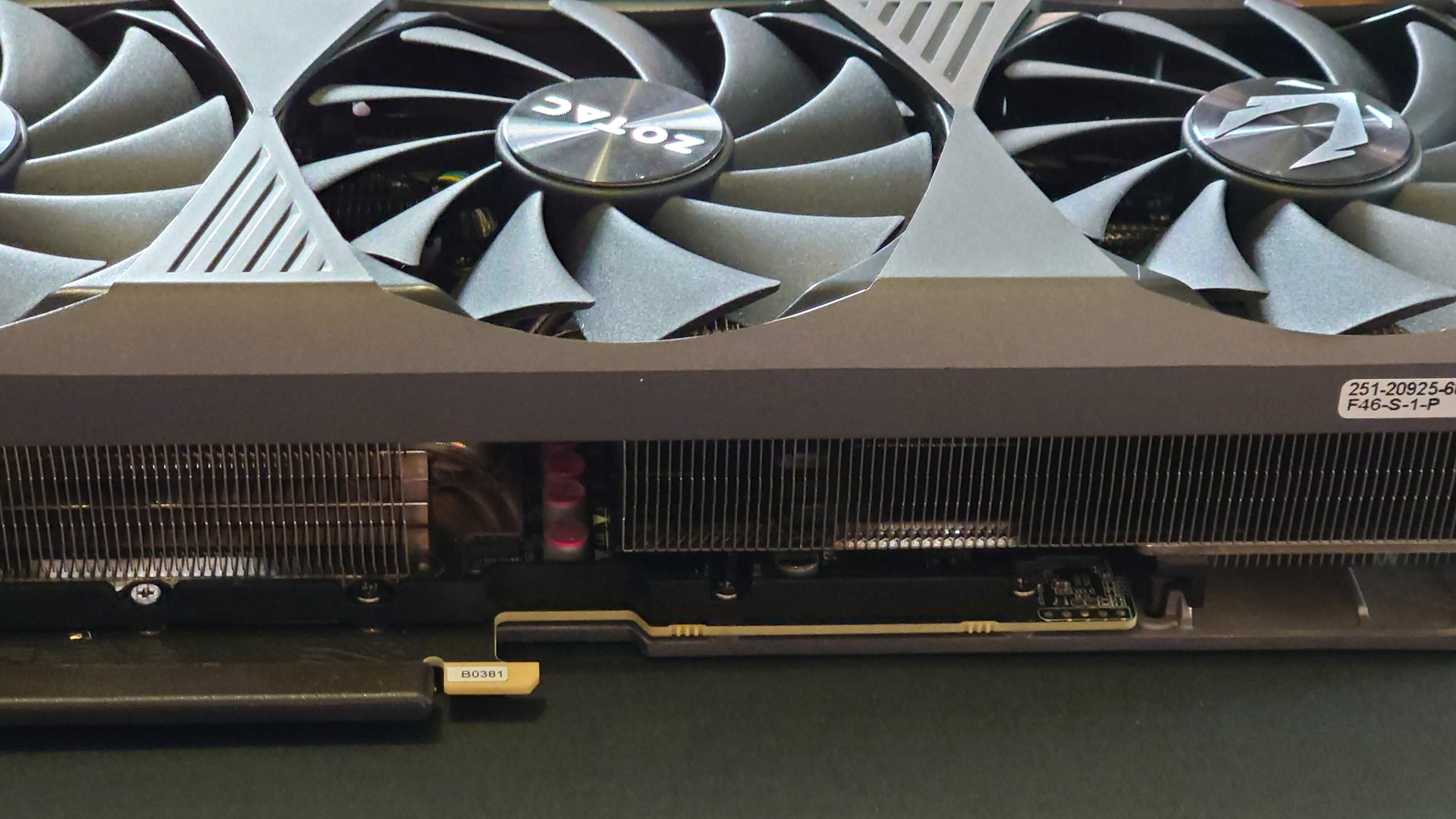
Aesthetics aside, the Zotac Gaming GeForce RTX 3080 AMP Holo benefits from a slightly higher boost clock of 1770 MHz over the Founder's Edition's 1710 MHz, meaning you can overclock that little bit further. It may not sound like much now, but should you want to squeeze every bit of juice out of the GPU, then this extra bump will deliver a couple of extra frames which could make all the difference in the future.
It's very much your standard fare as far as video out options are concerned; you'll find 3x DisplayPort 1.4 and 1x HDMI 2.1 to accommodate for resolutions and refresh rates of up to 4K 120 or 8K60. As you may expect, it's compatible with all the best gaming monitors. On the technical front, this GPU is working with 8,704 CUDA cores, 10GB GDDR6X memory, and a 320-bit memory bus clocked at 19 Gbps. That's some serious bandwidth, and more than enough to keep up with the vast majority of titles, as you'll see later.
Naturally, you're also benefiting from the Firestorm Utility software which can give you real-time performance monitoring as well as Active Fan Control to give you greater control over your performance. For reference, we kept everything as it came out the box with our review unit, but having the option to easily dial things up to 11 is certainly appreciated, especially when gaming in 2160p where the extra power counts the most.
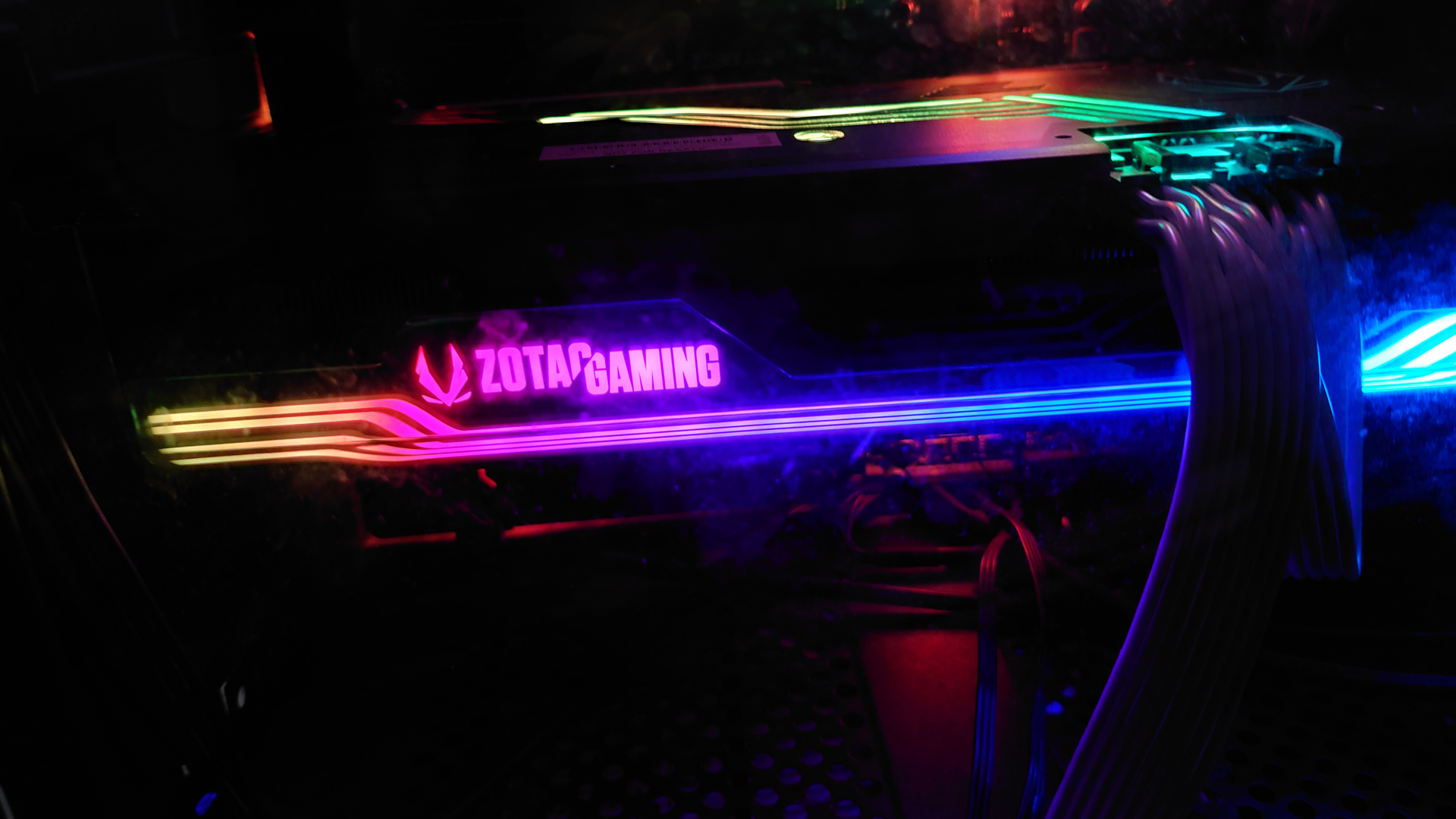
Performance
The Zotac Gaming GeForce RTX 3080 AMP Holo is an incredibly strong performer at both 1440p and 4K. With this particular GPU line being specifically marketed on its ray tracing 2160p prowess, I thought it best to stress test the card in some of the most demanding games on the market to see how well it could live up to this claim. For the most part, you're looking at well above 60 FPS in 4K at Ultra settings in the latest games. The only exception, as you will see in the benchmarks, is Cyberpunk 2077.
Time Spy: 14,207
Time Spy Extreme (4K): 7,189
Fire Strike Extreme (1440p): 18,262
Fire Strike Ultra (2160p): 10,398
Indeed, there's very little that the Zotac Gaming GeForce RTX 3080 AMP Holo can't do in 4K, especially when factoring in DLSS. As a frame of reference, we kept the playing field as level as we could by testing every title with the setting set to 'Performance' mode or running natively. You can expect 4K frame rates above 100 FPS when utilizing RTX capabilities (ray tracing and DLSS) in tandem, but things do start to slow down when pushing games to the limit in 2160p natively; something that only the RTX 3090 can do reliably (yet).
Here's how the Zotac Gaming GeForce RTX 3080 AMP Holo got on in some of the more demanding ray tracing-enabled titles on the market in excruciating detail:
Cyberpunk 2077:
Ultra settings 2160p (DLSS on; RTX ultra): 52 FPS average
Ultra settings 1440p (DLSS on; RTX ultra): 76 FPS average
Guardians of the Galaxy:
Ultra settings 2160p (DLSS on; RTX ultra): 91 FPS average
Ultra settings 2160p (DLSS off; RTX ultra): 46 FPS average
Ultra settings 1440p (DLSS on; RTX ultra): 92 FPS average
Ultra settings 1440p (DLSS off; RTX ultra): 84 FPS average
Control:
High settings 2160p (DLSS on; RTX high): 102 FPS average
High settings 2160p (DLSS off; RTX high): 32 FPS average
High settings 1440p (DLSS on; RTX high); 184 FPS average
High settings 1440p (DLSS on; RTX high): 64 FPS average
Metro Exodus (PC Enhanced Edition):
Extreme settings 2160p (DLSS on; RTX on): 87 FPS average
Extreme settings 2160p (DLSS off; RTX on): 34 FPS average
Extreme settings 1440p (DLSS on; RTX on): 125 FPS average
Extreme settings 1440p (DLSS off; RTX on): 86 FPS average
All games tested at their highest possible settings; DLSS set to 'Performance' mode unless otherwise stated.
The Zotac Gaming GeForce RTX 3080 AMP Holo, expectedly, chewed through the vast majority of games in my library at both 1440p and 2160p, with the most commendable performance coming from Metro Exodus (PC Enhanced Edition). This title features ray tracing on as standard, so when cranked up to Extreme settings (its version of Ultra) the visual fidelity can become seriously staggering.
Armed with DLSS, you can achieve framerates of 87 average with no real hit to the resolution to speak of. If you're wanting to push the refresh rate higher, though, dropping down to 1440p will see well above 120 FPS average in-game for not just Metro Exodus, but also Control, too.
It's in the native 2160p performance that the Zotac Gaming GeForce RTX 3080 AMP Holo begins to struggle a little bit, with still playable framerates hovering around the 30 FPS range with all sliders cranked up as far as they will go. If you're someone that can sacrifice performance for visuals then this is unlikely to be a problem for you here, but I recommend keeping DLSS enabled when in 4K or scaling your resolution down a bit where possible.
Guardians of the Galaxy, being one of the more visually striking and well-optimized PC games to release recently, was no problem at all for this RTX 3080 GPU. I averaged 91 FPS with everything set to the maximum with DLSS and ray tracing enabled. Native performance was also solid, too. Switching DLSS off completely in 4K still yielded a decent average of 46 FPS, though 1440p doubles that to 84 for a silkier gameplay experience.
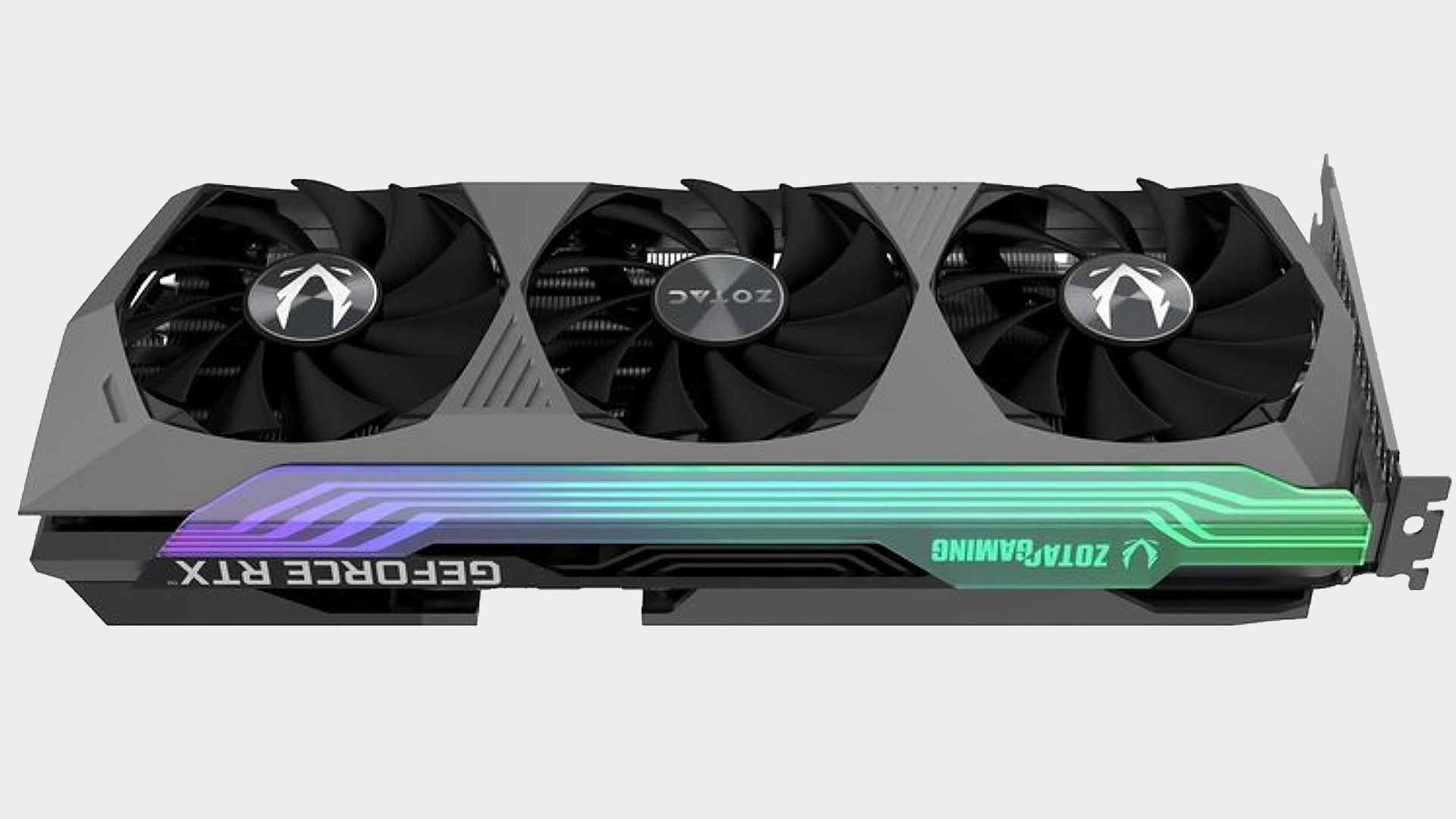
Now that Cyberpunk 2077 now supports more advanced ray tracing options, the game is more of a demanding visual spectacle over a year after release, and, consequentially, you're still not going to be able to achieve 60 FPS when pushing the game to its limits in 2160p. We should state that the average of 52 FPS is very much still more-than-playable, even creeping up to 60 FPS when outside of firefights. Though, if you're looking for a completely rock-solid 60 FPS at all times, then 1440p maxed out is the way to go, and my preferred method to explore Night City right now.
Make no mistake, however, the Zotac Gaming GeForce RTX 3080 AMP Holo is an incredibly capable graphics card for both 1440p and 4K at the higher end of the graphics scale. Really, anything you throw at it is going to present you with decent performance when all is cranked up. That's thanks to the 10GB GDDR6X memory; we're not yet seeing games even touch the sides in terms of VRAM usage, yet, with one or two exceptions from AMD optimized titles.
Should you buy the Zotac Gaming GeForce RTX 3080 AMP Holo?
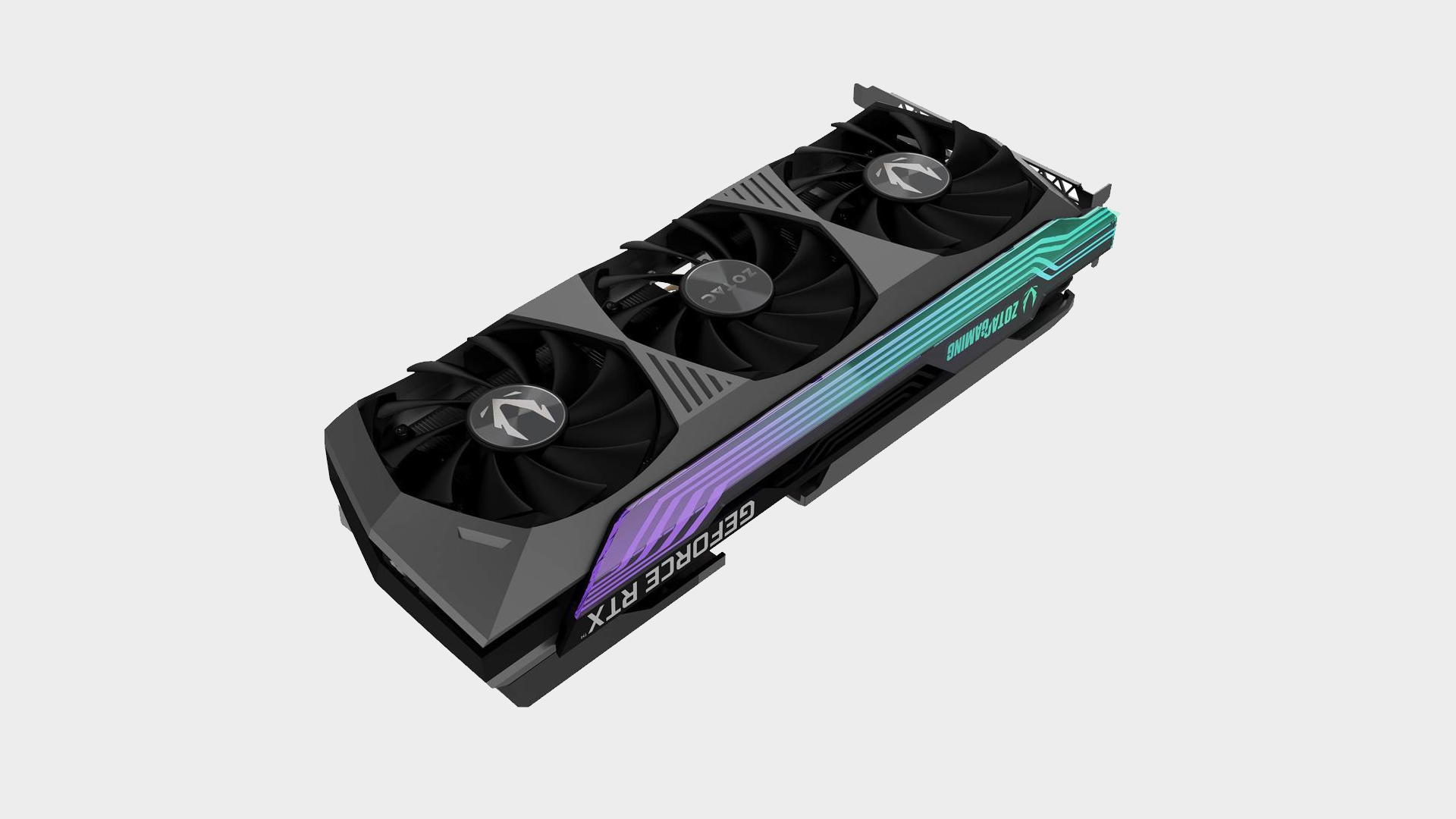
In an ideal world, my recommendation for the Zotac Gaming GeForce RTX 3080 AMP Holo would be clear-cut. If you can find it for its $799 MSRP then you should absolutely buy it to experience PC games running with ray tracing capabilities in 4K with no compromises. However, seeing as the vast majority of RTX 30 series models are beholden to supply issues, with RTX 3080 stock being hit especially hard, that price point just isn't realistic.
It's a truly fantastic video card, and one that's built to last you through the next few years at the very least, so if you can get your hands on it for its actual retail price then you're going to be very happy with what it can do, even in 2022.
How we tested the Zotac Gaming GeForce RTX 3080 AMP Holo
I pushed the Zotac Gaming GeForce RTX 3080 AMP Holo to its limits in the more demanding ray tracing-enabled titles on the market. I took extensive benchmarks of both games and industry-standard tests through PC Mark 10, including Time Spy and Fire Strike in their various forms.
I tested the Zotac Gaming GeForce RTX 3080 AMP Holo in Cyberpunk 2077, Control, Metro Exodus, Guardians of the Galaxy, and several other PC games in both 1440p and 4K (2160p) and took an average FPS where dedicated benchmarking modes were not available.
I have been involved in the PC gaming scene for over seven years now, have experience with hardware since the days of the GTX 900 series in 2014.
Buy if...
You can find it at, or close to, MSRP.
You want to futureproof your gaming PC.
You plan on overclocking your graphics card.
Don't buy if...
You have to pay an exorbitant rate for it.
You don't need overclocking overhead or RGB.

Aleksha McLoughlin served as the Hardware Editor for GamesRadar from June 2021 until August 2022. Her main area of expertise was the PC gaming platform, which comprised buying guides, features, reviews, and news coverage on components and prebuilt machines. She was also responsible for gaming chairs and storage. She now works on a freelance basis while studying to become a university lecturer specializing in English for foreign territories. Prior to joining GamesRadar, she wrote for the likes of Expert Reviews, The Rory Peck Trust, No Clean Singing, Vinyl Chapters, and Tech Spark while also working with the BBC.
